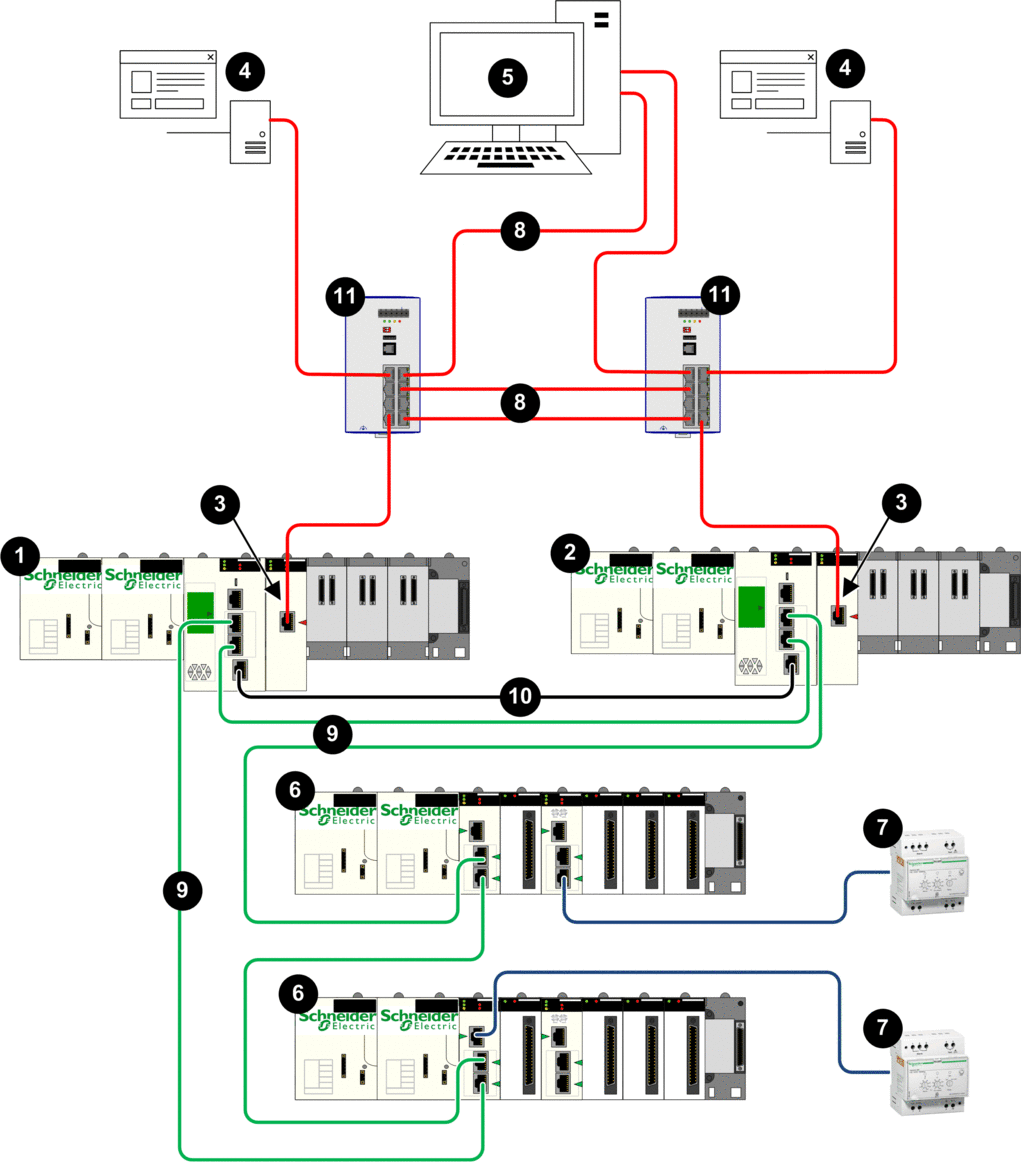Architecture

1 Primary Hot Standby PAC
2 Standby Hot Standby PAC
3 BMENUA0100 Ethernet communications module with embedded OPC UA server
4 OPC UA client (SCADA system)
5 Engineering workstation with dual Ethernet connections
6 X80 Ethernet RIO drop
7 Distributed equipment
8 Control network
9 Ethernet RIO main ring
10 Hot Standby communication link
11 Dual ring switch (DRS)
Description
This architecture provides redundant connections to dual OPC UA clients (SCADA systems). Cybersecurity can be either enabled or disabled in this architecture. The control network (8) is logically isolated from both the Ethernet devices that reside in the Ethernet RIO main ring (9), including the CPU, and the distributed Ethernet devices (7). This is accomplished at the Network layer of the OSI model via IP addressing.
The BMENUA0100 control port (3), with its dual IPv6/IPv4 stacks, allows upstream connectivity to the control network. When communicating via IPv6, it supports both stateless address auto-configuration (SLAAC) and static IP addressing.
The BMENUA0100 provides Modbus peer-to-peer communication between the two Hot Standby CPUs. The CPU device ports provide downstream connectivity to the Ethernet devices on the Ethernet RIO main ring.
Each BMENUA0100 is a client of an NTP server that resides in the control network. The connection is made through the BMENUA0100 control port. The BMENUA0100 modules also serve as NTP servers for other devices in the Ethernet RIO main ring. In this Hot Standby design, the BMENUA0100 module configured as “A” acts is the primary NTP server, and the BMENUA0100 module configured as “B” acts is the standby NTP server. In this way, the CPU time and the BMENUA0100 module time are synchronized.
The BMENUA0100 supports applicative time stamping. In this process, time stamping modules record events in their local buffer. These time stamped events are consumed by the application running in the PAC, which converts the raw record data and stores it in a usable format. The formatted records can then be consumed by a supervisory application, such as a SCADA system.


